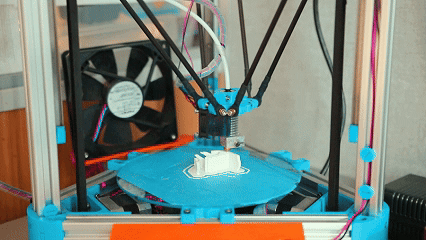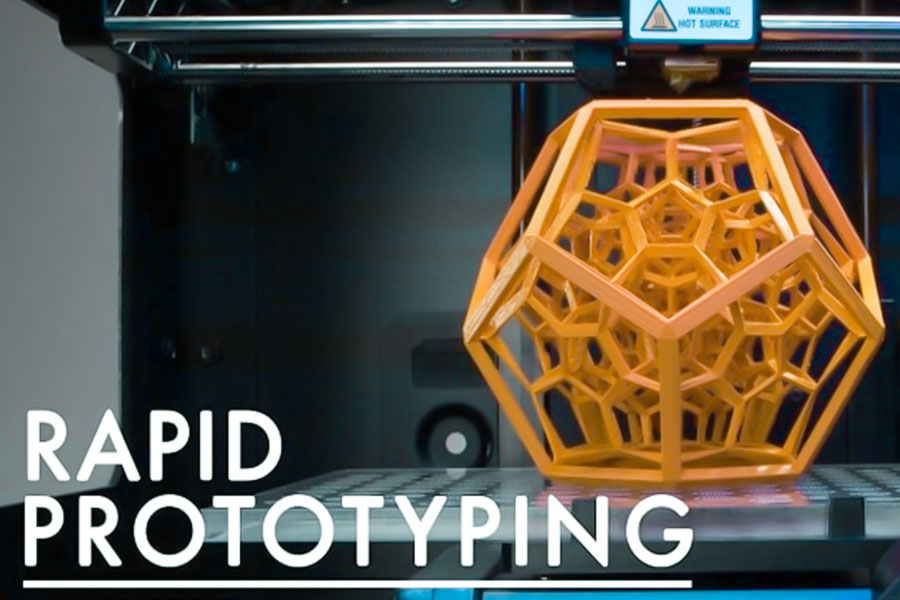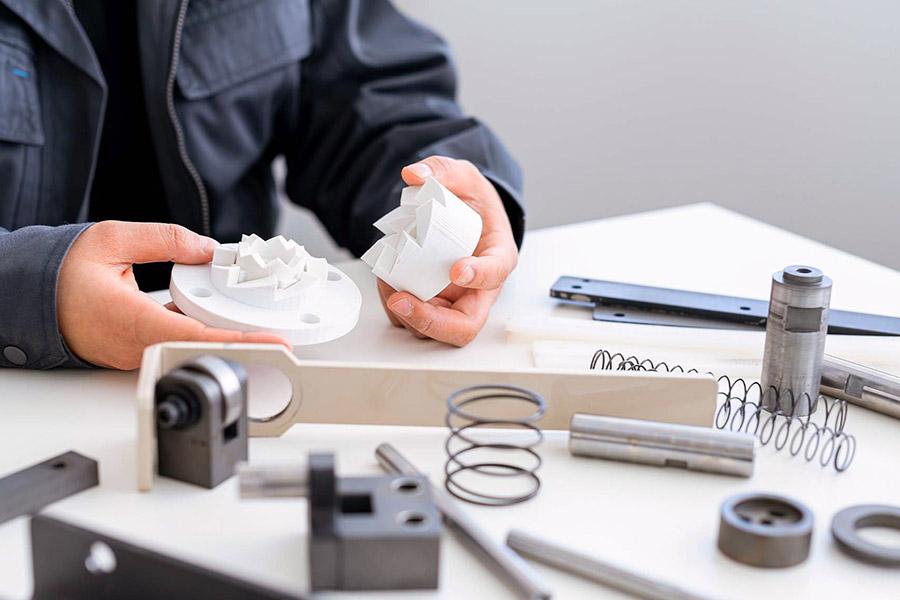Il design prototipo è il nucleo dell'innovazione del prodotto, in sostanza, costruendo il modello di prototipazione in Verificable Photicopis Modelli . Prototyping meaning do not just build models, but are validated through Fisica multidimensionale, aiutando il team a identificare i difetti di progettazione, ottimizzare i layout funzionali e fornire parametri chiave per la produzione successiva.
come un provider di servizi di prototipazione rapida unica, JS Manufacturing si basa su capacità di integrazione tecnologica completa (dalla progettazione di concetti alla produzione di prove su piccola scala) e un sistema di consegna rapida di 48 ore a

Qual è lo scopo principale della prototipazione rapida?
; Data-translateID = "EBE33BB59013670EBFCC5F96F7CB9011" Data-Pos = "0" Data-Len = "276" Data-V-7B79C893 = ""> Lo scopo principale della prototipi rapida è quello di creare efficacemente modelli fisici testabili attraverso la prototipi rapidi, per essere href = "https://jsrpm.com/blog/how-does-rapid-rototiping-work"> aiuta le aziende convalidano rapidamente i concetti di progettazione, identificano potenziali problemi e ottimizzano soluzioni nelle prime fasi dello sviluppo del prodotto. Questo ha significativamente abbreviato il ciclo di ricerca e lo sviluppo, elimina le scarpe di massa critica e fornisce dati critici di massa. Questo metodo di verifica eterativa non solo migliora il design della progetta Combinazione di funzionalità e adattabilità del mercato del prodotto finale. ; Data-translateId = "8576e8efba3a73fc4df39c2b30b84b05" data-pos = "449" data-len = "221" data-v-7b79c893 = ""> > Quali sono le tecniche comunemente usate per prototipazione rapida?
> Quali sono le tecniche comunemente usate per prototipazione rapida?
1.Steroscopic Light Curing (SLA)
Nei prototipi rapidi, la tecnologia SLA utilizza la luce laser ultravioletta per solidificare la resina liquida e i modelli ad alta previsione strati per layer. Struttura complessa e complessa e complessa href = "https://jsrpm.com/surface-finishing"> La morbidezza superficiale può ottenere l'effetto specchio.
2.Selective laser laser laser (SLS)
usando la sinterizzazione laser a strati nylon polvere data-translateId = "A785DD3F17A9DA0A5C2EA37AA757621F" Data-Pos = "0" Data-Len = "132" Data-V-7B79C893 = "">> Prototipo Test di funzione, in particolare per resistenza alla temperatura ad alta temperatura e modanatura industriale di forza.
3.Fuoused Deposition Modeling (FDM)
attraverso lo strato di filo di plastica, il costo è il più basso, l'operazione è conveniente. It is widely used for model verification of rapid prototipi e supporta una varietà di materiali comuni come PLA e ABS.
4.Direct Metal Laser Sintering Laser Sintering (DMLS)
Per prototipi metallici, tecnologia DMLS, che utilizza laser ad alta energia 5.cnc Machining
Il taglio delle materie prime in combinazione con la tecnologia controllata dal computer è il processo più accurato in Rapid prototipo (± 0,005 mm) ed è adatto per metallo complesso o prototipi di voti industriali.
6. Hybrid Manufacturing (3D Printing+CNC) span class = "frase" data-translateid = "0525bc332b2c5552360cdff99d" data-pos = "0" data-len = "210" data-v-7b79c893 = ""> combinando tecnologie additive e sottrattive con tecniche di prototipazione rapida, la stampa 3D viene prima utilizzata href = "https://jsrpm.com/cnc-machining"> Accuratezza della lavorazione di precisione CNC
span class = "frase" data-translateid = "0525bc332b2c5552360cdff99d" data-pos = "0" data-len = "210" data-v-7b79c893 = ""> 
Perché la stampa 3D è più veloce dei metodi tradizionali?
Motivi fondamentali per il vantaggio di velocità di 3d 3d Stampa
span Data-V-7b79c893 = "> 1.
Metodi tradizionali come lo stampaggio di iniezione e il cestino del fustea richiedono la produzione di stampi, che possono richiedere settimane a mesi, mentre la stampa 3D crea direttamente da modelli digitali senza la necessità di sviluppare lo stampo. JS AN CASA ANSUSSUSTIN SLA SLA Per completare il primo prototipato in 24 ore, rispetto ad almeno 7-10 giorni per la tradizionale casting di stampo.
2. La produzione automatica a strati riduce l'intervento manuale
span class = "frase" data-translateid = "3e9950d1684b0cd24172d7629b3815 data-pos = "0" data-len = "305" Data-V-7B79C893 = ""> La stampa 3D ha stratificato automaticamente i materiali attraverso il software, senza debug di attrezzature manuali. js automated La linea di produzione può essere stampata 24 ore al giorno senza nessuno , aumentando l'efficienza di oltre il 50%.
3. Progettazione parallela e iterazione rapida
prototipi tradizionali richiedono un processo lineare di progettazione, campionamento, modifica e re-campionamento, mentre la stampa 3D supporta test multi-versione sincrono. 4. Modaggio monouso di strutture complesse
Per strutture geometriche complesse come griglie scavate e superfici irregolari, la tradizionale lavorazione CNC richiede che le parti vengano assegnate e assemblate, mentre la stampa 3D può essere completata come un insieme. tecnologia SLS utilizzata per produrre dissipali di calore prototipo Per i clienti con canali di flusso interno. >> Processi
| Confrontando le dimensioni | Tecnologia di stampa 3D (JS Company) | tecniche di prototipazione tradizionali |
| ciclo di produzione | 1-3 giorni (parti standard). | 7-30 giorni (incluso lo sviluppo dello stampo). |
| Adattabilità materiale | 50+materiali (metallo/plastica/composito). | limitato dai materiali dello stampo e dalle tecniche di elaborazione. |
| Design Freedom | Support Structures Hollow, Hollow e Gradient. | limitato dai materiali dello stampo e dalle tecniche di elaborazione. |
| Modifica costo | Modifica dei file CAD consente la ristampa senza alcun costo aggiuntivo. | È costoso rivamulare o regolare l'attrezzatura. |
| Costi di piccoli batch | costo stabile entro 50 pezzi. | Il costo della produzione su piccola scala aumenta significativamente con l'aumento della quantità. |
| ecologico | Nessun rifiuto generato (i materiali sono riciclabili). | Genera scarti e rifiuti di muffa. |
JS Accelerates Prototiping
> Quali strumenti sono necessari per la prototipazione rapida?
; Data-V-7B79C893 = ""> 1.Hardware Strumentistampanti 3d (apparecchiature di produzione additiva)
- SLA di grado industriale (Currezione luminosa), SLS (Sintering laser selettivo), FDM (deposizione di fusione) per le strutture complesse per . JS company, for example, can use SLA technology to Prototipi di plastica ad alta precisione completa in 24 ore, rispetto a diversi giorni per il CNC tradizionale.
- L'attrezzatura da stampa 3D in metallo (come DML) è adatta per la prototipazione di parti metalliche ad alte prestazioni e accorciamento dei cicli di sviluppo del dado.
Centro di lavorazione CNC
combinato con la stampa 3D, può essere utilizzato per prototipi rapidi da parti metalliche o plastiche ad alta precisione, in particolare per le situazioni che richiedono una morbidezza ad alta resistenza o superficie. La linea di produzione CNC automatizzata della compagnia JS può ridurre il tradizionale tempo di elaborazione di 7 giorni a meno di 3 giorni.
>> Span>
lamiera rapida, solitamente utilizzata per la verifica della struttura prototipo o prototipi di conchiglie semplici, supporta una varietà di materiali come acrilici, legno e lenzuola.
> software di modellazione CAD Creazione di modelli 3D accurati, sono il punto di partenza per tutti i prototipi. > Software di slittamento
converte Simuzioni di verifica e span>
ANSYS, ABAQUS e altri software di analisi degli elementi finiti vengono utilizzati per simulare lo stress e il calore prima dello stampaggio per evitare test e errori ripetuti.
span data-v-7b79c893 = "> 3. JS company's material library includes more than 50 materials to ensure prototype solution meet production requirements. 4.Support services Fast mold manufacturing The production of small-scale prototypes (50-500 pieces) can be achieved by using short-term molds such as silicone molds and aluminum alloy molds combined with vacuum injection molding or low pressure casting, and the cycle time is reduced by 80% compared to traditional steel molds. Automation of post processing JS uses a combination of polishing, grinding, spraying, plating and other equipment to reduce reprocessing time to athird of conventional methods through robotic arms and automated assembly lines. Supply Chain Collaboration Platform Support for online uploading of design documents (STEP/STL, etc.), real-time tracking of prototyped progress and integration of global vendor resources to ensure that materials and processes match. Five Effects of material properties on prototype model performance 1.Structural strength and durability 2.Surface accuracy and texture 3.Feasibility of functional verification 4.Balance cost and efficiency 5.Environmental adaptation Common materials and typical application scenarios Material selection is the key variable for prototyping model success. JS company helps customers find the most optimal solution between cost, performance and speed of delivery by integrating material libraries libraries and digital processes. A prototype medical device, for example, achieved early functional validation through titanium alloy 3D printing, ultimately saving 6 months of clinical trials. 1.Functional module verification 2.Interactive Experience Testing 3.Extreme environment simulation 4.System integration verification 1.Material optimization and utilization rate improvement 2.Efficient production process accelerates turnover growth 3.Technology integration reduces overall costs Combining CNC precision machining and 3D printing to efficiently process complex structural prototypes, avoiding multiple clamping or mold costs in traditional processes. 4.Collaborative effects of mass production 5.Indirect cost reduction through sustainable practices In the development of rapid prototyping, technology has broken through a single rapid size, gradually forming an intelligent ecosystem that combines design thinking with industrial realization. From SLA photopolymerization technology to conceptual prototyping with nanoscale precision, to 3D printing of metals and direct melting of mass-produced metal prototyping model, each process is redefining the boundaries of validation. It is both a tool for error correction and a catalyst for innovation. In hybrid manufacturing, when CNC precision processing collides with 3D printing, enterprises are able to build digital twin bridges between virtual reality and reality, compressing design iteration cycle into real-time conversations with the market. The 48-hour prototype ecosystem created by JS epitomizes this shift. The content on this page is for general reference only. JS Series makes no express or implied warranties regarding the accuracy, timeliness, or applicability of the information provided. Users should not assume that the product specifications, technical parameters, performance indicators, or quality commitments of third-party suppliers are completely consistent with the content displayed on this platform. The specific design feature, material standards, and process requirements of the product should be based on the actual order agreement. It is recommended that the purchaser proactively request a formal quotation and verify product details before the transaction. For further confirmation, please contact our customer service team for professional support. JS is an industry leading provider of customized manufacturing services, dedicated to providing customers with high-precision and high-efficiency one-stop manufacturing solutions. With over 20 years of industry experience, we have successfully provided professional CNC machining, sheet metal manufacturing, 3D printing, injection molding, metal stamping and other services to more than 5000 enterprises, covering multiple fields such as aerospace, medical, automotive, electronics, etc. We have a modern factory certified with ISO 9001:2015, equipped with over 100 advanced five axis machining centers to ensure that every product meets the highest quality standards. Our service network covers over 150 countries worldwide, providing 24-hour rapid response for both small-scale trial production and large-scale production, ensuring efficient progress of your project. Choosing JS Team means choosing manufacturing partners with excellent quality, precise delivery, and trustworthiness. 1.What are the advantages of rapid prototyping? Rapid prototyping can help with rapid iteration and product optimization, shorten development cycles, reduce costs, and effectively validate design feasibility, making it especially suitable for testing complex structures and functions. 2.Which is faster, CNC machining or 3D printing? 3D printing is faster in small-scale production because it can be layered and formed directly without the need for mold opening and complex programming. Large or high precision metal parts because of their fast cutting speed, high automation level, numerical control processing efficiency. 3.Can fast molds replace traditional molds? Fast molds can replace traditional molds in a short period of time and are suitable for small-scale test production (e.g. 100-500 pieces), but have a short service life and low accuracy. Traditional molds are still required for mass production to ensure efficiency and consistency. 4.Does rapid prototyping require programming? Most rapid prototyping technologies require basic programming or slicing software operations (such as 3D printing), but automation tools (such as models generated by AI) greatly reduce thresholds, allowing simple models to be built quickly without complex programming.
How does material selection affect the prototyping model effect?
Tipo di materiale
Strength
Surface accuracy
costo
Scenari applicabili
JS company's technological advantages
ABS Plastic
★★☆
medium
basso
Prototype of household appliances and car casings.
Supports ±0.05mm accuracy and can be dyed or electroplated.
Nylon (PA)
★★★
Rough
Centre
Functional parts, wear-resistant components.
SLS technology achieves a hollow structure with a 30% weight reduction.
Photosensitive resin
★★☆
Tall
Higher
Precision parts, medical models.
SLA equipment are layered up to 0.02mm thick and transparent components are 90% transparent.
lega di alluminio
★★★★
Smooth
Tall
Aerospace and robot structural components.
CNC precision machining+anodizing, surface hardness increased by 50%.
Silicone gel
★☆☆
Soft
Centre
Seals, ergonomic prototypes.
Fast replication mold injection molding tool, service life up to 50 times.

How to validate product functionality through rapid prototyping?
How can JS's 20% cost savings be reflected in rapid prototyping projects?
Summary
Disclaimer
JS Team
For more information, please visit the official website: jsrpm.comFAQs
Resources






